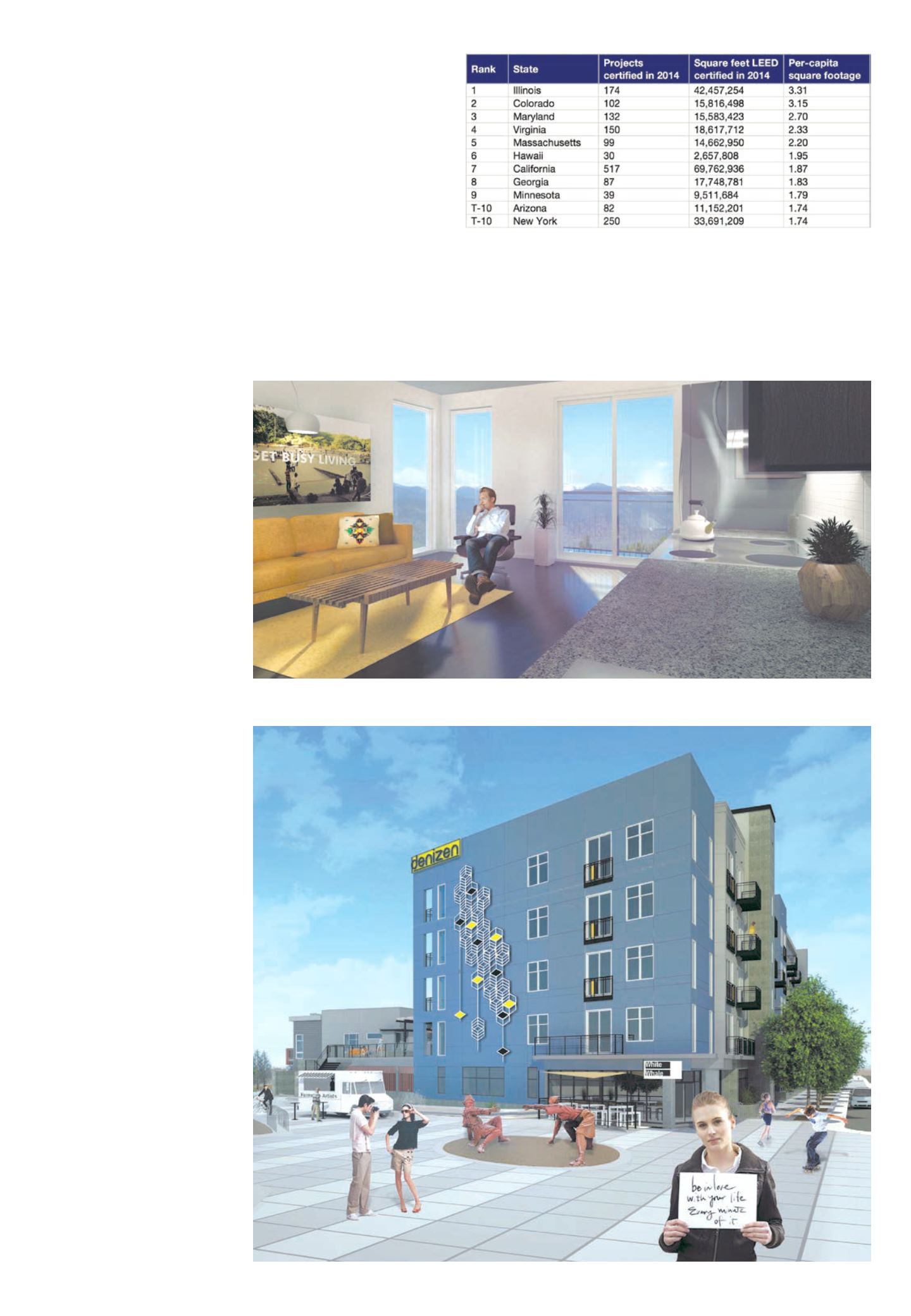
 Page 14
— Multifamily Properties Quarterly — April 2015
Page 14
— Multifamily Properties Quarterly — April 2015
costs required when upgrading an
existing building are much higher. To
help offset the upfront costs associat-
ed with efficiency upgrades for current
buildings, property owners can get
financing through Property Assessed
Clean Energy. Colorado enacted PACE-
enabling legislation and there is a
program in development. The program
in Colorado could be unique because
there is a consideration that financ-
ing will be offered for new construc-
tion as well, according to the Denver
Office of Sustainability.
In terms of the cost of LEED for new
construction, according to Cohen,
LEED certification has to be a priority
going into design. “During design you
have to establish what the goals are,
and it starts with the architects,” said
Cohen. Every aspect of a project must
be well thought out, which means
more time planning ahead. The next
piece is finding a quality contractor
who understands LEED construction.
For Cohen and D4 Urban, that con-
tractor is PCL Construction.
Just like in the design phase, there
are several factors that need to be
considered in the construction phase.
“The contractor has to be able to
implement an efficient recycling pro-
gram on site and determine where to
source the correct types of materials,”
said Cohen. Energy Star appliances,
high-efficiency water heaters, prox-
imity to alternative transportation,
bike storage and parking space allot-
ment may seem like small details,
but all translate toward a building
becoming LEED certified.
“We have recycled 86 percent of
waste material at Denizen,” said Ste-
phen Kovach, senior project manager,
PCL Construction. “All lumber we
receive is precut to minimize waste,
and as an added bonus it increases
our efficiency in build time. When
it takes 30 seconds to cut a piece of
lumber, and there are 5,000 pieces, it
saves a lot of man-hours that would
otherwise go toward just cutting lum-
ber.”
The Denizen project also incor-
porates several initiatives that are
not included in LEED criteria, but do
fall under the umbrella of sustain-
ability. Windows and artwork in the
stair columns encourage residents
to use the stairs instead of elevators.
Integration of the open space imme-
diately adjacent to the building with
a pocket park and Regional Transpor-
tation District transit plaza provide a
place for residents to walk dogs and
enjoy the outdoors.
“People may not realize that these
things are contributing to their health
on a day-to-day basis,” said Cohen.
“But when they feel happy and
healthy all the time, it will encour-
age them to stay in that space. This is
about retention of residents, and we
feel that a healthy building will help
us do that.”
Resident retention is great for
any multifamily complex, especially
when considering the return on
investment when a property is sold.
Cohen said sustainable and LEED-
certified buildings give renters a more
competitive offering because they can
save money on utility bills and trans-
portation, which can lead to charging
higher rents or having less vacancy.
“On sale of assets, institutional inves-
tors are definitely paying a premium
for LEED Gold or Platinum certified
buildings on an exit sale,” said Cohen.
“We are seeing that return.”
Colorado’s sustainability efforts
continue to progress toward the ulti-
mate goal of net zero – creating build-
ings with zero net energy consump-
tion. This means the total amount
of energy used by the building on an
annual basis is roughly equal to the
amount of renewable energy created
on site. Industry professionals have
indicated that they are falling in line
with the 2030 challenge – becoming
carbon-neutral and using no fossil
fuel greenhouse-gas-emitting energy
to operate by the year 2030. The non-
profit organization Architecture 2030
started the challenge.
The USGBC has a prominent pres-
ence in Colorado, gathering industry
professionals to educate, network
and continue the conversation about
progression toward sustainability.
“We are not a governmental agency,
so we cannot mandate anything,
and we do not want to do that,” said
Sharon Alton, executive director,
USGBC Colorado. “We do want people
to convene and discuss green build-
ing, and that is what we are seeing in
Colorado.”
Because the real estate industry
and especially multifamily are boom-
ing in Colorado, it is easy to see why
conversations and actions are taking
place surrounding sustainability. If
the current landscape is any indica-
tion, this state will be at the forefront
of green building for many years.
“It’s about values and trying to cre-
ate something that has implications
for the way people live their lives,”
said Cohen. “The Colorado lifestyle is
a big part of the motivation for this
trend and as a development commu-
nity, we need to lead the charge.”
s
Continued from Page 1U.S. Green Building Council calculates the top 10 states for LEED using per capita fig-
ures as the measure of green building.
Photo courtesy: D4 Urban
Residents are able to enjoy the outdoors with a pocket park and RTD transit plaza.
Photo courtesy: D4 Urban
Each unit at Denizen features a fresh air circulation system and Energy Star appliances.
















